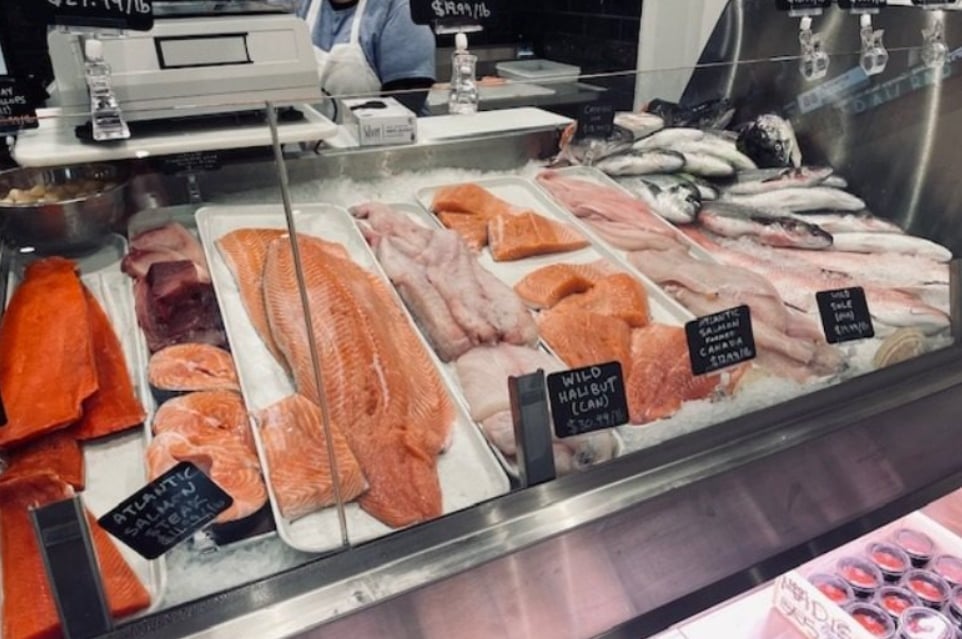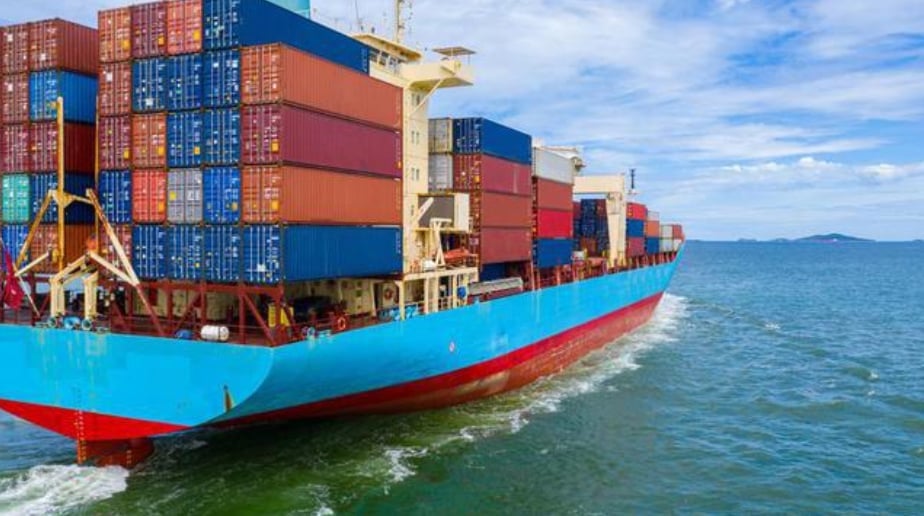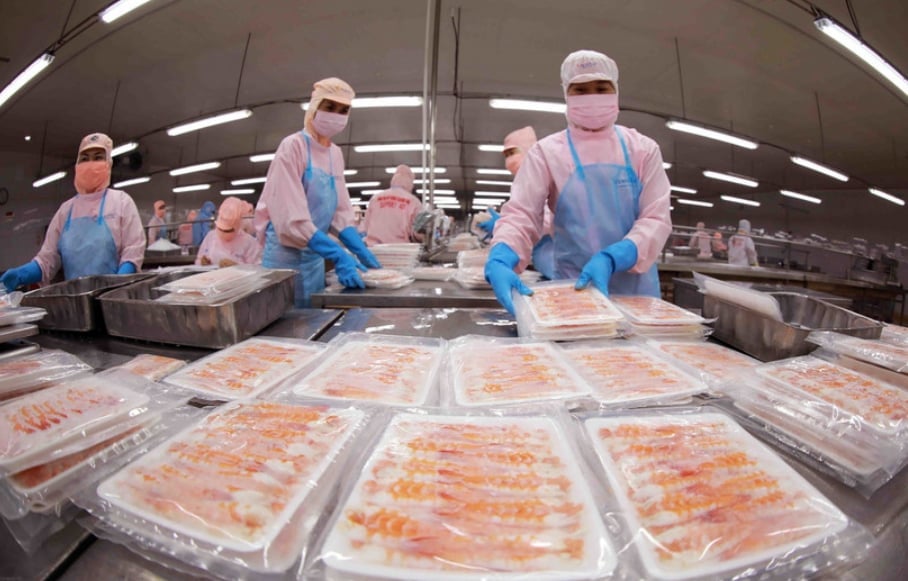December 6, 2025 | 05:22 GMT +7
December 6, 2025 | 05:22 GMT +7
Hotline: 0913.378.918
December 6, 2025 | 05:22 GMT +7
Hotline: 0913.378.918
Since April 2025, the U.S. has begun imposing new tariffs on most imported seafood products, with a common rate of 10%, and up to 30% for certain product groups from specific countries. According to the Global Trade Update released on June 4, 2025, by the United Nations Conference on Trade and Development (UNCTAD), this policy is causing major disruptions in global supply chains. This is a significant move, as the U.S. is the world’s largest seafood importer, with an annual import value of around USD 16 billion, while its exports amount to only about USD 4.5 billion.

Consumers in the U.S. are facing a sharp rise in seafood prices due to the government's new tariff policy. Photo: Jill Wang.
According to UNCTAD, the new tariff rates have not only spiked seafood prices in the U.S. but also placed significant pressure on global supply chains. The U.S. cannot immediately expand domestic production, particularly for products like salmon, which require up to three years to reach stable output levels.
At the same time, the U.S. has increased import duties on shipbuilding materials such as steel and aluminum, driving up logistics and seafood preservation costs. According to Reuters, the prices of commonly consumed seafood in the U.S., such as shrimp, tuna, and salmon, are expected to rise sharply. American consumers will have to pay more to maintain their average annual seafood consumption of 20 pounds (approximately 9 kilograms).
Data from Descartes Datamyne - a global trade intelligence platform that helps businesses expand their import-export operations - showed that U.S. containerized seafood imports from heavily taxed regions dropped significantly, falling by 28.5% in May 2025 compared to the same period last year, and by 28.3% in June.
According to UNCTAD, this decline is forcing seafood-export-dependent countries to revise their strategies, pivot toward domestic markets, or seek new trading partners, intensifying competition in the global marketplace.
While Vietnam is not directly subject to the highest tariff rates, the indirect impacts are nonetheless significant. First, as countries redirect their exports, key Vietnamese markets such as the EU, Japan, and South Korea will likely face an oversupply risk, leading to fiercer price competition.

Disruptions in maritime transport and soaring logistics costs are becoming major challenges for global seafood exports. Photo: VGP.
In addition, Vietnam is also affected by rising input material costs, such as steel and aluminum. According to Energy News (2025), increased input costs are placing considerable pressure on supporting industries like packaging, machinery, and seafood processing materials. Furthermore, disruptions in major shipping routes have posed significant challenges, delaying transportation, extending delivery times, and increasing costs for storage and container handling.
In the face of mounting challenges from international markets, Vietnam has developed proactive strategies to adapt in the short and long term. In the immediate term, Vietnamese enterprises are encouraged to maximize the benefits of existing free trade agreements (FTAs) such as the CPTPP and EVFTA to optimize rules of origin and reduce tariff pressure.
According to UNCTAD, establishing transshipment warehouse systems in major import markets will help mitigate supply chain disruptions. At the same time, prioritizing deeply processed, high value-added products will create a distinctive competitive advantage, avoiding direct confrontation with countries that export low-cost raw materials.

Vietnamese seafood processing enterprises are proactively innovating their products and increasing the proportion of deep processing to maintain their export advantages amid fluctuations in the global market. Photo: Vu Sinh.
In the long term, Vietnam must make strong investments in developing its domestic supporting industries to reduce dependence on imported materials. Greater investment in deep processing and the application of modern traceability systems will also be essential to meet new technical standards from major markets quickly. At the same time, expanding into new markets such as the Middle East, Africa, and South Asia is a necessary step to diversify export destinations.
Trade support organizations such as VASEP, the Ministry of Industry and Trade, and trade promotion agencies should actively provide information and early warnings on market fluctuations, while strengthening connections between businesses and emerging markets. Technical support in obtaining international certifications and traceability is also key to helping small and medium-sized enterprises adapt quickly.
Amid the ongoing major restructuring of the global seafood market, it is clear that Vietnam needs a more proactive and flexible strategy than ever before. Redirecting export markets, upgrading domestic production chains, and optimizing logistics will not only help the seafood industry respond effectively in the short term but also lay a solid foundation for sustainable development in the future.
Translated by Kieu Chi

(VAN) Despite numerous challenges, Vietnam's key seafood products are maintaining strong momentum, setting the stage for full-year exports to potentially reach USD 11 billion.

(VAN) The signing of a protocol between Viet Nam and China on the export of fresh jackfruit represents a significant milestone in agricultural trade cooperation between the two countries.

(VAN) On November 27, the Ninh Binh Department of Agriculture and Environment and the Institute for Green Growth Research organized a training course on greenhouse gas inventory for businesses.

(VAN) China’s cooking oil is suddenly flooding into India. It all comes down to a soybean surplus that Beijing doesn’t quite know what to do with.

(VAN) An Giang promotes supply-demand connections, standardizes quality and builds value chains, creating a foundation for sustainable bird’s nest development and aiming to expand exports.
/2025/11/24/5339-4-nongnghiep-075331.jpg)
(VAN) Recently, the conference on 'Sustainable Fisheries Linkage Chain - Tilapia for Export' took place in Tien Hai commune, Hung Yen province.
/2025/11/21/4309-2-153400_128.jpg)
(VAN) Green and low-emission rice is paving the way for Vietnamese rice to enter high-end markets, marking the beginning of a transformation journey toward greening and elevating the national rice brand.